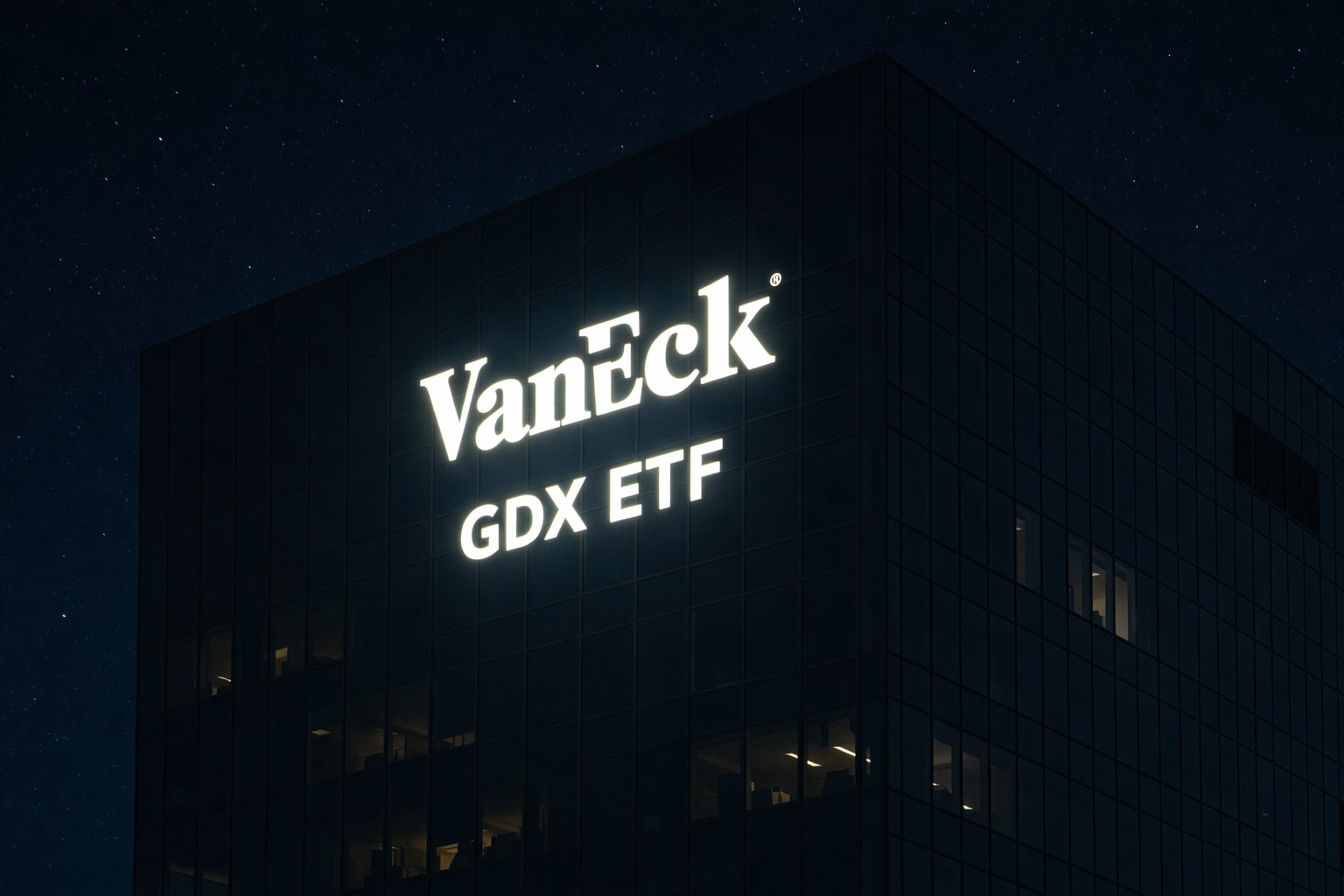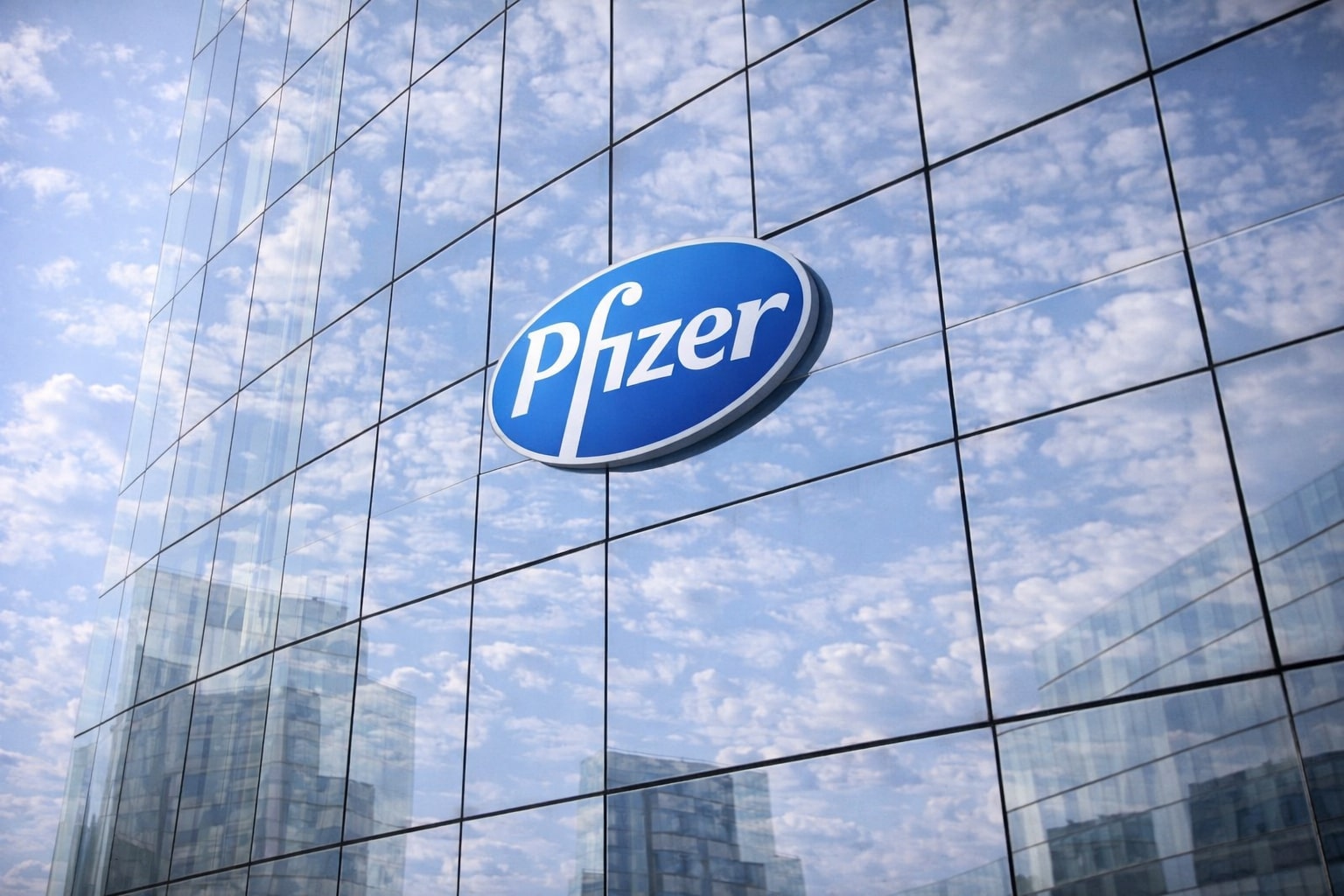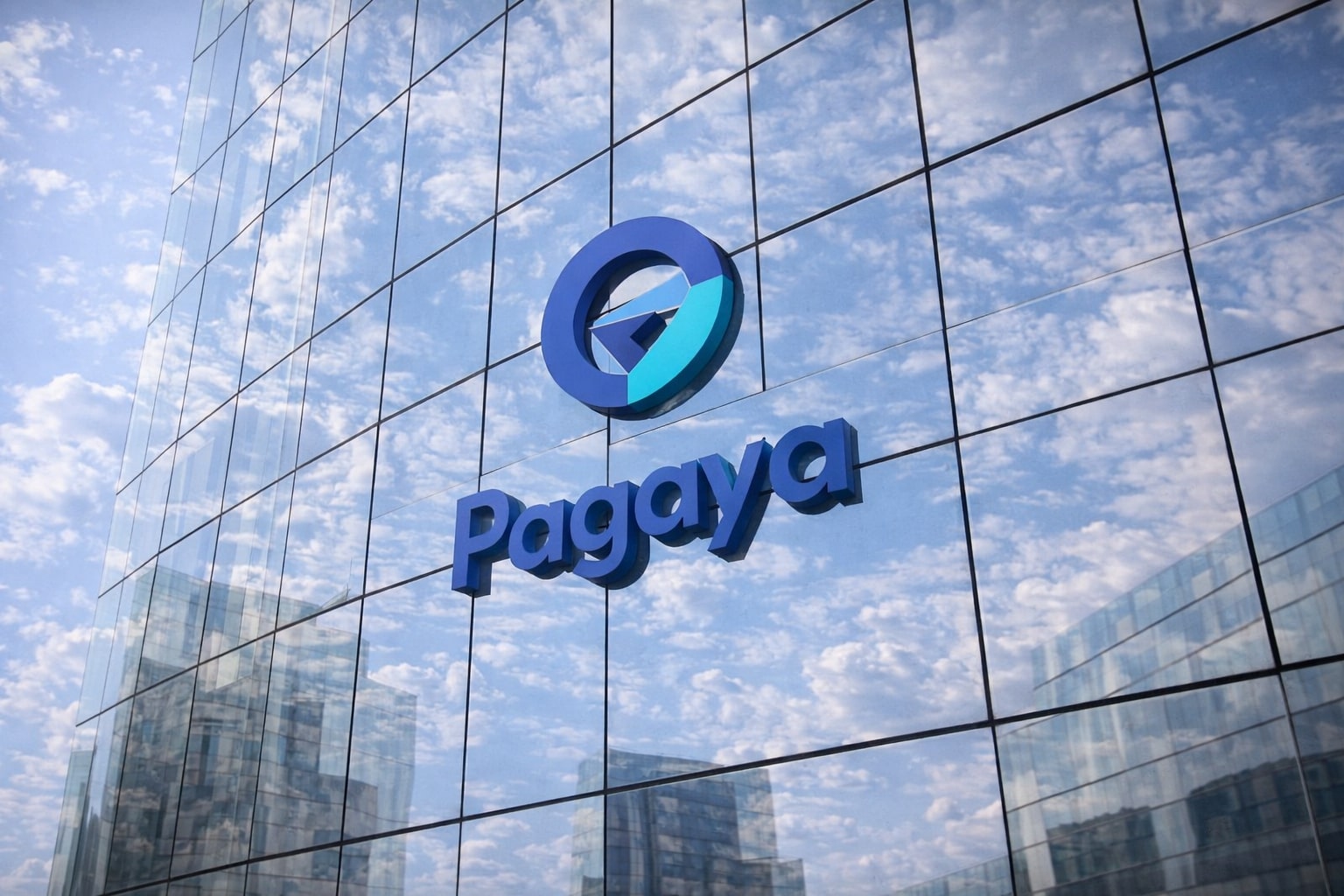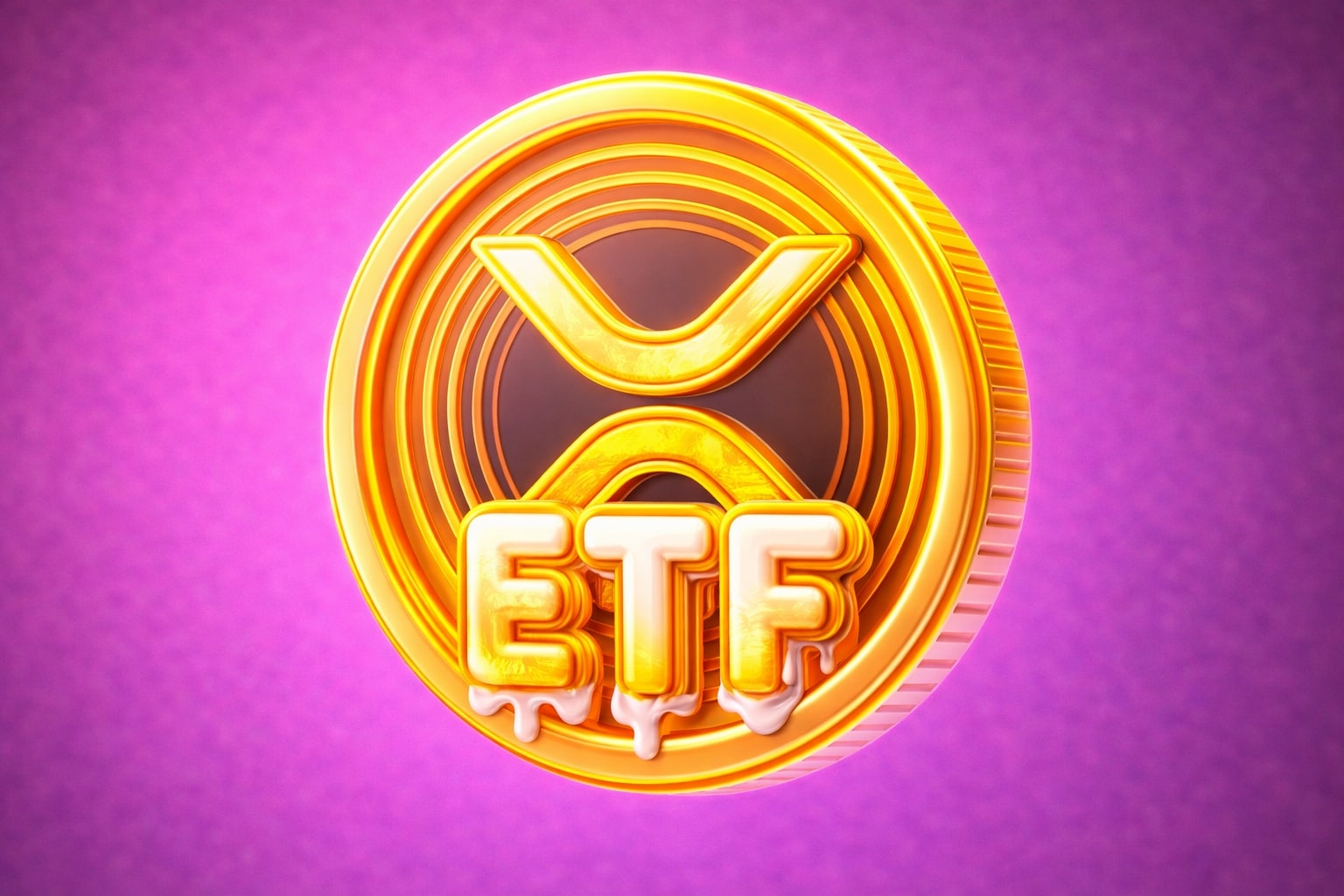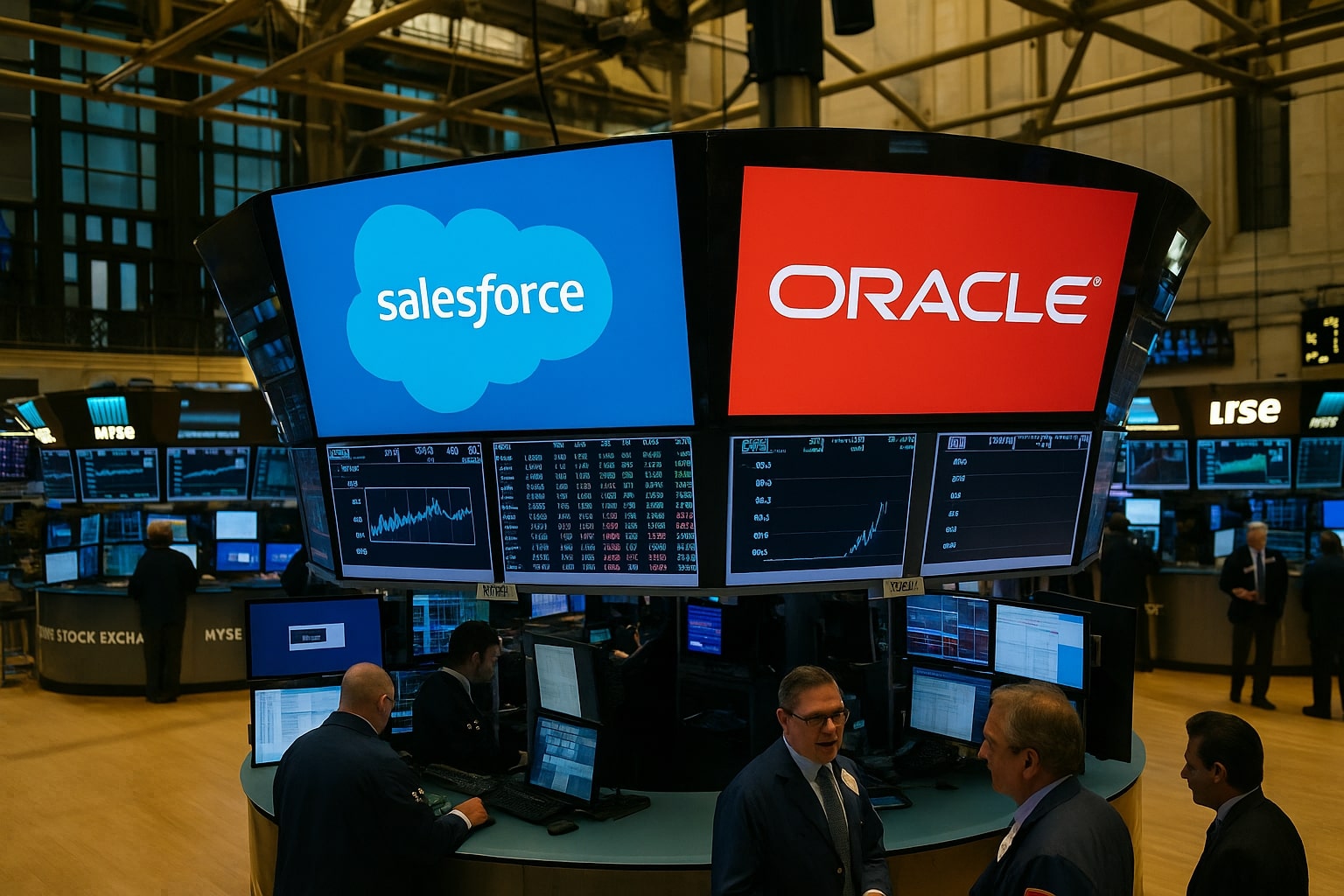
Oracle Stock vs Salesforce Stock: A 2025 Showdown Between AI Momentum and Deep Value
Oracle’s $455B RPO and AI infrastructure drive premium multiples, while Salesforce delivers $13.9B in free cash flow but trades at a steep discount | That's TradingNEWS
NYSE:ORCL vs NYSE:CRM – two tech titans on diverging valuation paths
Oracle (NYSE:ORCL) and Salesforce (NYSE:CRM) are both entrenched in enterprise software, but their 2025 trajectories highlight opposite market perceptions. Oracle has become the AI and cloud infrastructure darling, its shares climbing more than 81% YTD to trade near $305, giving it an $867 billion market cap. Salesforce, meanwhile, trades at $239, down 35% from its 52-week high of $369, with a market cap of $230.8 billion, despite reporting record revenues, margins, and free cash flow. The market is rewarding Oracle with growth multiples closer to NVIDIA, while Salesforce still trades like a legacy SaaS player, despite embedding AI across its entire product suite.
Revenue and growth momentum show contrasting narratives
Oracle delivered $14.93 billion in Q1 2026 revenue, up 12% YoY, with cloud infrastructure accelerating 55% to $3.3 billion and SaaS adding $3.8 billion at 11% growth. Remaining Performance Obligations (RPO) surged to $455 billion, up 359% YoY, giving Oracle a visibility unmatched in enterprise software. Salesforce, by comparison, reported $10.24 billion in Q2 revenue, up 9.8% YoY, with subscription and support at $9.7 billion and a gross margin of 78.1%. Its operating income jumped 24% YoY to $2.34 billion, and net income surged 32% to $1.89 billion. Salesforce revenue guidance sits at $41.1–41.3 billion for FY2026, while Oracle is tracking toward $67 billion FY2026 revenue and $81.8 billion FY2027, a steeper trajectory supported by infrastructure demand.
Profitability and free cash flow reveal Salesforce’s strength
While Oracle is plowing $35 billion in FY2026 capex into AI superclusters, driving negative levered free cash flow (–$2.83 billion), Salesforce is already a cash machine. Salesforce generated $13.9 billion in free cash flow TTM, with a 31.6% margin, and holds $15.4 billion in cash against $11.8 billion debt. Its operating margin stands at 22.8% and net margin at 16.9%, making it one of the most profitable SaaS operators. Oracle maintains healthy margins at 31% operating and 21% net, but its cash flow is currently absorbed by hyperscaler expansion.
Valuation gap underscores investor bias
Oracle trades at a forward P/E of 44.25 and EV/Sales of 16.15, while Salesforce trades at just 21.4× 2025 EPS and 16.7× 2027 EPS, with a price-to-sales multiple of 5.94×. Despite Salesforce projecting EPS growth from $11.34 in FY2026 to $12.7 in FY2027, giving it a 28% earnings expansion, the market still discounts it relative to peers. Oracle is valued closer to AI leaders like NVIDIA (39.6× forward P/E) and Broadcom (54×), while Salesforce trades more like a traditional software provider, even though its AI and Data Cloud ARR has surged 120% YoY to $1.2 billion with over 12,500 deals signed.
Strategic initiatives: Oracle’s AI superclusters vs Salesforce’s AI-first enterprise
Oracle is betting heavily on infrastructure scale, signing four multi-billion-dollar deals in Q1, embedding databases across AWS, Azure, and Google, and positioning itself as the backbone for AI inference. Its optionality includes potential participation in a $40–$60 billion TikTok U.S. deal, leveraging its Project Texas hosting relationship. Salesforce’s strategy is product-driven, embedding AI across Sales Cloud, Service Cloud, Marketing Cloud, Tableau, and even launching AI-driven IT Service Management to compete with ServiceNow. Salesforce’s smaller but targeted acquisitions—Bluebirds, Waii, and Regrello—are expanding AI capabilities without over-leveraging the balance sheet.
Read More
-
GDX ETF at $88 While Gold Tests $4,400: Are Gold Miners Poised for $100?
19.12.2025 · TradingNEWS ArchiveStocks
-
XRP ETF Boom: XRPI at $10.94 and XRPR at $15.49 as XRP-USD Clings to the $1.80–$1.90 Zone
19.12.2025 · TradingNEWS ArchiveCrypto
-
Natural Gas Price Forecast: NG=F Hovering Near $3.92 As Weather, LNG And Storage Collide
19.12.2025 · TradingNEWS ArchiveCommodities
-
USD/JPY Price Forecast - Dollar to Yen Near 157 as BoJ’s 0.75% Rate Hike Backfires on the Yen
19.12.2025 · TradingNEWS ArchiveForex
Capital return and insider dynamics show two approaches
Salesforce has leaned on shareholder returns, with a $50 billion buyback authorization and quarterly dividend of $0.415 per share (0.69% yield). It returned $2.6 billion to shareholders in Q2 alone. Institutions hold 83% of Salesforce, with insiders at 2.6%, a structure favoring institutional control. Oracle, by contrast, remains founder-driven, with 41% insider ownership led by Larry Ellison and 44% institutional ownership, giving it tighter strategic control. Its dividend yield is smaller at 0.66%, but insider alignment has reassured markets during its aggressive AI pivot.
Analyst expectations favor both, but multiples diverge
Salesforce has an analyst average price target of $334.68, implying nearly 40% upside from current levels, with highs up to $425. Oracle’s consensus is $333.49, just 9% upside from $305, though bullish estimates stretch to $491 if AI growth sustains. Oracle is already priced as an AI hyperscaler, while Salesforce still carries a legacy SaaS discount despite stronger cash flow and more conservative capex.
Outlook: Oracle carries momentum, Salesforce carries value
Oracle’s story is about momentum—$455 billion in RPO, AI infrastructure expansion, and optionality in deals like TikTok. Salesforce’s story is about undervaluation—$239 stock price vs $311 fair value, 28% discount, strong FCF, and accelerating AI adoption. Investors chasing growth multiples and hype are paying a premium for Oracle, but those looking for underpriced cash flow in AI SaaS may find Salesforce the more compelling bet. Based on the data, NYSE:ORCL is a momentum-driven Buy at current levels, while NYSE:CRM is a deep value Buy with greater medium-term upside if the market closes the valuation gap.














